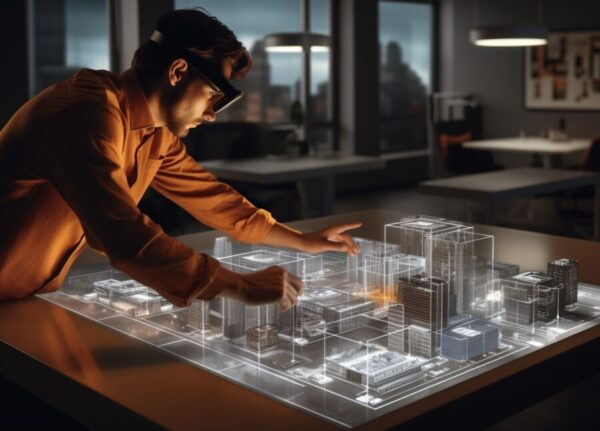
The Architecture, Engineering, and Construction (AEC) industry is facing significant changes as architects, builders, and owners tackle affordability, sustainability, and equity crises. We are undergoing a digital transformation leveraging complex, spatial datasets and connecting the office, shop, and field. XR – the umbrella term for all things virtual reality (VR), augmented reality (AR), mixed reality (MR) – is a key technology in that digital transformation, enabling effective decision-making through spatial experience that resonates with our innate capacity as evolved primates to learn, understand, communicate, and remember three-dimensionally.
In this two-part series, we will explore how XR is changing the AEC landscape and empowering professionals as augmented and virtual reality technologies are helping to bridge the physical and digital realms.
| Tools, software, platforms and contemporary XR solutions for AEC professionals mentioned in this post: |
| Arkio Autodesk – Navisworks Autodesk – Revit BIM Holoview Enscape Resolve Sentio VR SketchUp Viewer The Wild Twin Motion Unity Unreal Engine |
How is XR transforming the AEC sector?
The notion that XR can transform and elevate experience in the AEC industry isn’t new. Over 30 years ago, my own imagination was first captured by an insightful fantasy article about the challenges and benefits of VR-based architectural design and review published by Eimar Boesjes in the “Special Summer Reading Issue” of CADENCE magazine in 1991.
The idea of applying AR to construction to enhance field crews’ to understanding of construction tasks goes back 25 years, in which instructions for furniture assembly were featured content in the ground-breaking Magic Book prototype pass-through AR project at the University of Washington Human Interface Technology Laboratory.
We’ve come a long way in the past few decades, and today the landscape is filled with a rich variety of XR solutions to help architects and engineers, contractors and fabricators, and even facility owners and operators make more effective decisions. XR for AEC has grown from a niche specialty market to a reliable one, ripe for innovation and opportunity.
Below, we’ll review several trends and capabilities offered by modern XR tools for the AEC industry, and break them down into base functionality, common trends many are doing well, and specialty differentiators among XR solution-providers helping improve the entire AEC industry.
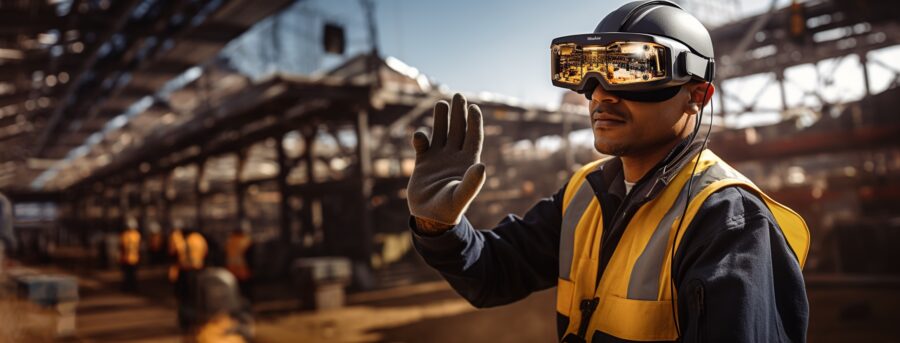
Table stakes: don’t stop here
XR tools in AEC first picked off the low-hanging fruit of design review, by offering real-time experience of 3D design data at full scale, aimed at enhancing the design review process. There are still nuances in the differences among tools, but thankfully it’s safe to say that you can easily visualize (experience!) your BIM data as a VR walkthrough, and sometimes overlayed in AR, in nearly every solution, to democratize and extend access to 3D information. Some tools, like The Wild, have been in the game for a while now; others, are newer to the space, like Trimble’s SketchUp Viewer for Meta displays.
In many cases, this baseline walkthrough capability is enhanced with the ability to take measurements, make annotations, and control asset visibility in a digital environment. These are vital features to support design reviews, but hardly unique – anyone who enhances walkthroughs supporting only these capabilities has not distinguished themselves as a market leader.
A baby-step up from “I can walk through my data at full scale” capabilities are tools that juice up the quality of the experience. Solutions aimed at architectural visualization, offering (near-) photorealistic rendering and credible simulation of physics have also saturated this market, with leaders among them including Enscape and TwinMotion. These tools have varying degrees of complexity in their UX, some of them relying on game engines like Unity and Unreal Engine to develop incredibly convincing environments, lighting, and materiality to make mouth-watering architectural walkthroughs. Sentio VR, in particular, has cleverly combined the best of both worlds, supporting immersve VR, and photorealistic 360 panoramas in a single experience.
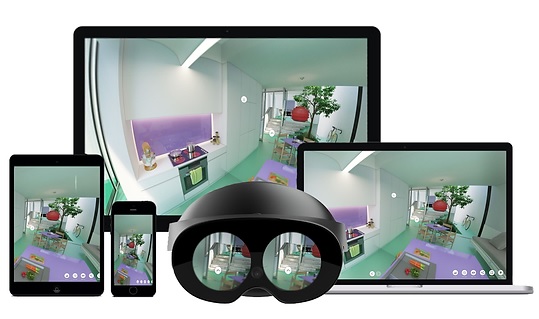
Common trends: get on board
Looking across about a dozen XR tools aimed at the AEC market, we find a number of interesting trends. Not every XR provider is on board with all of these, but enough solutions providers are heading in this direction to indicate which way the winds are blowing…
Expand beyond design to construction
Not long ago, nearly every tool was focused on addressing architectural design visualization and review, and among them were favorites like The Wild. Many of today’s solution providers have evolved beyond a singular focus on solving architect’s needs to expand into construction. Solutions like Arkio and Resolve are evolving to take full advantage of video passthrough technology, offering mixed-reality experiences that align well with the specific needs of construction use cases on the project site.
Use cases and business value
With this evolution to the construction space comes new value propositions and use cases. There are a wide range of target use cases in construction (constructability review, QA/QC, layout, installation, field/office communication, etc), but the business value many vendors target are aimed at reducing rework and increasing productivity. These, of course, are low-hanging fruit in construction, so it’s an easy story to tell qualitatively, even if quantitative, proven business value remains elusive in many cases. As vendors more specifically target enterprise customers, it is vital to focus on establishing business value through thoughtful use cases, proofs of concept, and pilot projects for successful engagement and implementation.
“Easy Button” from BIM
I’m a loud voice in a large chorus of XR proponents who have demanded a painless, one-button-or-less data workflow from common BIM tools to an XR experience. It seems that XR vendors are finally getting the message, because most are touting an easy export of 3D data from common modeling packages like SketchUp, as well as Autodesk’s Revit and Navisworks products. Sentio VR does this as well as anyone, with a simple one-click export or drag-and-drop interface to move content into VR. In my opinion, one click is still too many clicks, but the point is that XR solution providers recognize complicated workflows from BIM to XR as a barrier to adoption, and many are focused sharply on fast, easy creation and set-up.
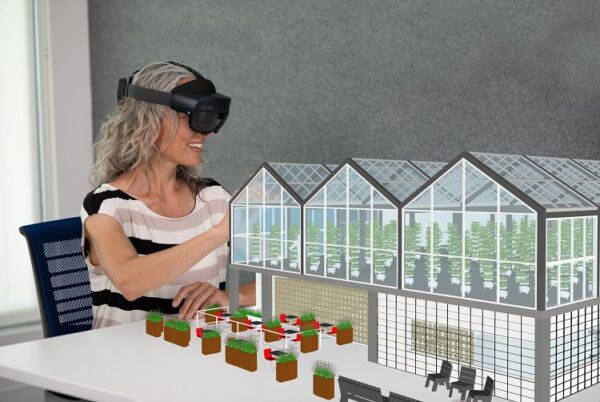
Analyze and track
Beyond architectural walkthroughs at full scale, many XR solutions providers enable users to analyze and track data. These include measurement of size, location, or quantity of assets, displaying and organizing per asset properties, documenting and tracking issues identified by participants. Most modern tools offer these capabilities – it’s almost “table stakes” but there is still significant variation in their maturity and implementation of these important features. What remains to be proven isn’t the value of supporting issue-tracking features in immersive XR, but rather: what is the direct value of XR in tracking and resolving issues.
Round-trip workflows
Beyond an easy BIM-to-XR dataflow, many progressive XR providers have matured their workflows to enable a round-trip from an XR experience back into “normal job operations.” Some of these include data export back into BIM, like Arkio enables to move natively-authored geometry back into native BIM tools, while others like Resolve have built a core functionality around pushing the issues identified in an XR experience into common issue-resolution and project-management solutions like the Autodesk Construction Cloud, Procore, or BIM One. And, while Autodesk has been quiet about their own XR solution currently in development the past two years, it is widely anticipated that their offering will integrate well with their broader ecosystem of AEC solutions.
Big data sets
Many XR solutions providers are also sharply focused on accepting and rendering large data sets, chipping away at the (former) need to break down a complex BIM into smaller, bite-sized chunks. This is accomplished in part by an evolution of the XR devices, now capable of storing and processing much larger files. But it also speaks well of the efforts of companies like Arkio and Resolve to re-engineer their algorithms to better accommodate significantly more triangles than they previously could. Other companies, like BIM Holoview, exploit remote rendering strategies, leveraging of streaming from the cloud rather than local rendering on a headset.
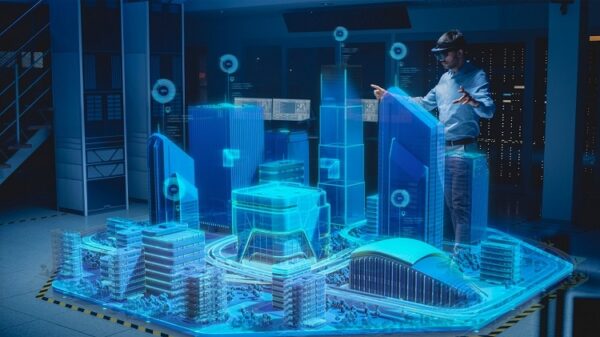
Favored project types
While I would argue that XR use cases apply to all project types and sizes, there’s a clear trend that many companies have focused their efforts on markets and mission-critical projects where facilities are inherently complex, where coordination demands are high, and schedules are extremely tight. Data centers, healthcare and biotech, oil and gas, and factories lead the list of candidate project types where XR providers are touting the largest ROI for AEC professionals.
Click here to read part 2 in this series, which explores some of the market differentiators that are helping XR solutions providers stand out in the crowd, and takes a look at what is next for XR in the AEC space.
About the author
Dace Campbell
Dace is a professionally licensed architect and consultant with extensive experience developing and implementing strategy and innovation. He helps AEC firms realize tangible business results from their investment in XR technology, and XR tech companies land and expand in the AEC industry. With over 30 years of expertise researching, developing, testing, and applying XR on hundreds of successful projects over his career, he has proven that AR and VR enhance productivity, sustainability, and equity for designers, builders, and owners. Dace’s landmark projects have been recognized with multiple awards for furthering industry excellence, including four AIA Technology and Practice BIM Awards and the Microsoft HoloLens AEC Use Case of the Year Award.
